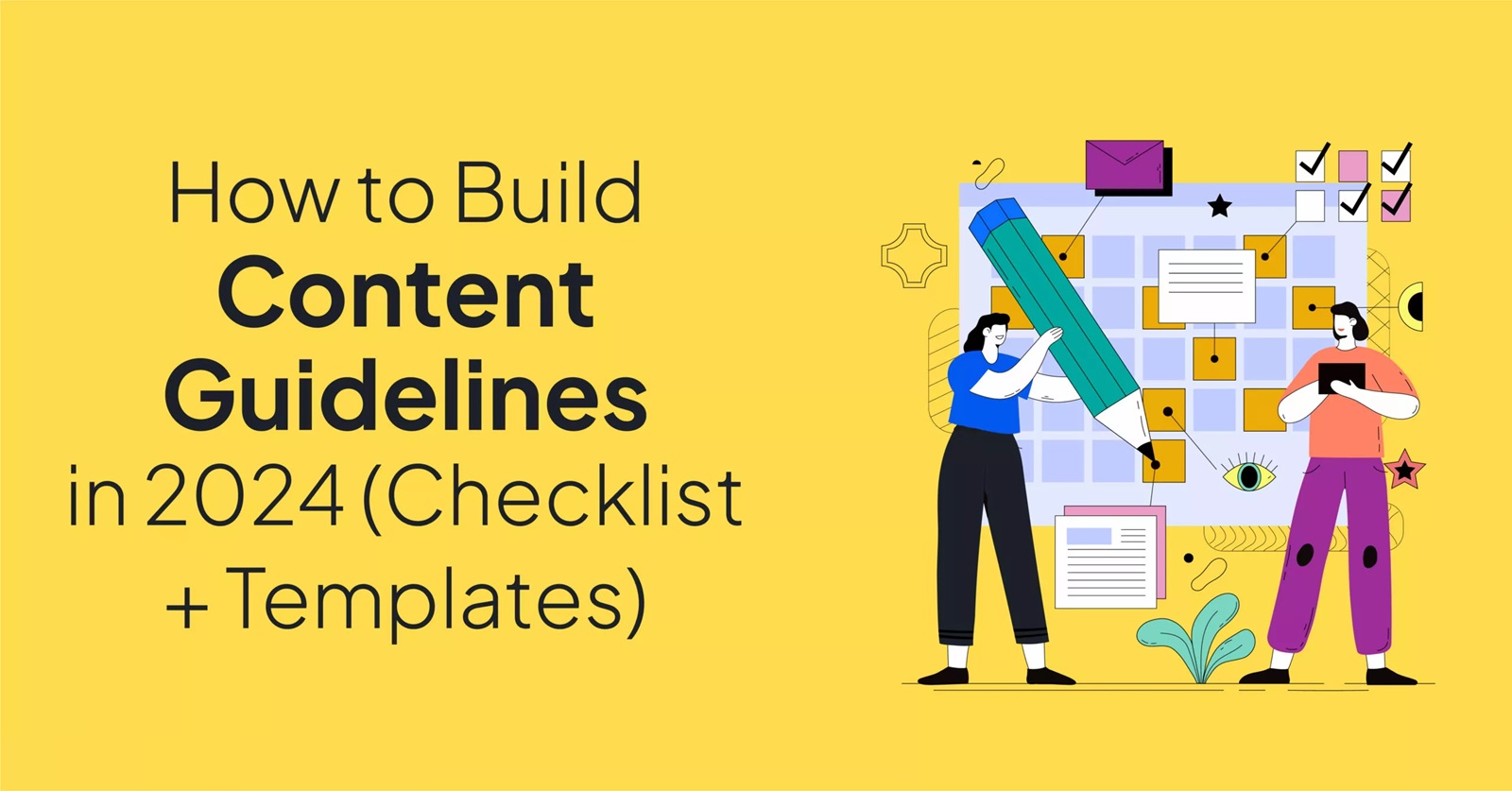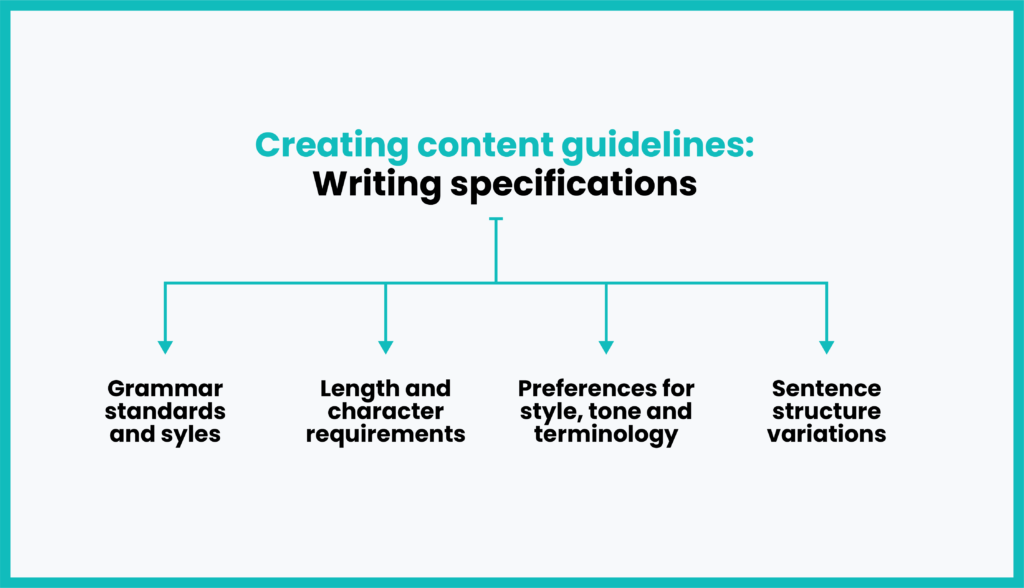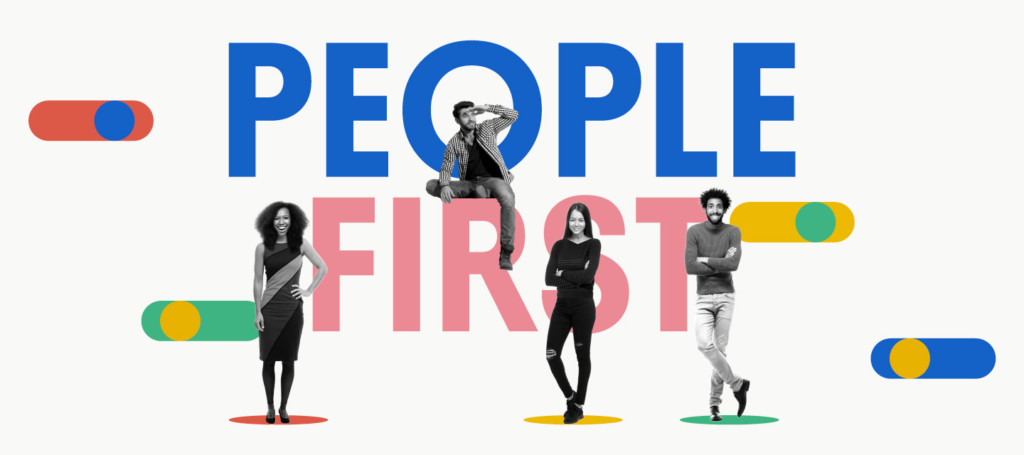
Google has made it easier for AI-generated content to be considered helpful. Before, Google stressed the importance of content made by humans. Now, they’re okay with content made for people, even if it’s generated by AI.
But does this mean you can let ChatGPT do all your writing? Not quite. While AI is improving, it’s mostly just recycling existing content. So, you’ll end up with the same stuff in different words. Is that really useful?
What you really need is fresh, original content that reflects your own knowledge and skills.

What is considered “people-first content”?
“People-first content” is a concept in content creation and marketing that prioritizes the needs, interests, and experiences of the audience above all else. It emphasizes creating content that resonates with and adds value to the lives of the people consuming it. Here are some key characteristics of people-first content:

- Understanding What Users Want:
- Meeting Specific Needs: We make sure to answer why users are searching, helping them directly with their problems.
- Providing Value: Whether it’s information or entertainment, we give users what they need.
- Being Honest: We don’t trick users with misleading titles. Our content is clear about what it offers.
- Emphasizing Quality and Trustworthiness:
- Reliable Information: Our content is based on facts from trustworthy sources, without bias or false information.
- Easy to Understand: We write clearly and engagingly, avoiding complicated language.
- Offering Fresh Insights: We provide new perspectives, not just repeating what’s already out there.
- Building Trust:
- Being Authoritative: Our content comes from experts, earning trust from readers.
- Open Communication: We welcome feedback and conversation, showing we care about our users.
- Long-Term Focus: We aim for sustainable strategies that benefit users, not just quick wins.
- Examples of User-Focused Content:
- Detailed Guides and Tutorials: We help users solve complex problems step by step.
- Compelling Stories: Our stories connect with readers emotionally.
- Data-Driven Reports: We provide valuable insights with facts and figures.
- Engaging Blog Posts: Our posts cover topics users care about, keeping them interested.
Overall, people-first content is about putting the audience at the center of the content creation process and creating meaningful experiences that resonate with them on a personal level. It’s an approach that focuses on building relationships, fostering trust, and ultimately driving positive outcomes for both the audience and the creators.
Tips on Writing People-First Content
Writing people-first content requires a deliberate focus on the audience’s needs, interests, and preferences. Here are some tips to help you create content that resonates with your audience:

- Understand Your Audience: Take the time to research and understand your target audience. Identify their demographics, interests, pain points, and aspirations. Use tools like surveys, social media analytics, and customer feedback to gain insights into their preferences and behaviors.
- Address Their Needs: Create content that addresses the specific needs and challenges of your audience. Offer practical solutions, valuable insights, or helpful tips that can improve their lives or solve their problems.
- Use Empathetic Language: Connect with your audience on an emotional level by using empathetic language. Show that you understand their struggles, concerns, and desires. Use words and phrases that resonate with their experiences and feelings.
- Focus on Benefits: Highlight the benefits of your product, service, or message rather than just its features. Explain how it can positively impact your audience’s lives and fulfill their needs or desires.
- Tell Stories: Stories are a powerful way to engage and connect with your audience. Share real-life examples, case studies, or testimonials that demonstrate the value of your offering and how it has helped others overcome similar challenges.
- Be Authentic: Be genuine and transparent in your communication. Avoid using overly promotional or salesy language that can turn off your audience. Instead, be honest and authentic about your intentions and what you have to offer.
- Encourage Interaction: Foster a sense of community and engagement by encouraging interaction with your content. Invite comments, questions, and feedback from your audience, and respond promptly to their inquiries or concerns.
- Optimize for Accessibility: Make sure your content is accessible to all members of your audience, including those with disabilities or different language preferences. Use clear and concise language, descriptive alt text for images, and ensure your website is compatible with screen readers.
- Personalize Content: Tailor your content to different segments of your audience based on their preferences and interests. Use personalization techniques such as dynamic content, email segmentation, or targeted messaging to deliver relevant content to each individual.
- Measure and Iterate: Track the performance of your content using analytics tools and metrics such as engagement rates, conversion rates, and audience demographics. Use this data to identify what resonates with your audience and continuously refine your content strategy accordingly.
By following these tips, you can create people-first content that truly connects with your audience and drives meaningful engagement and results.



